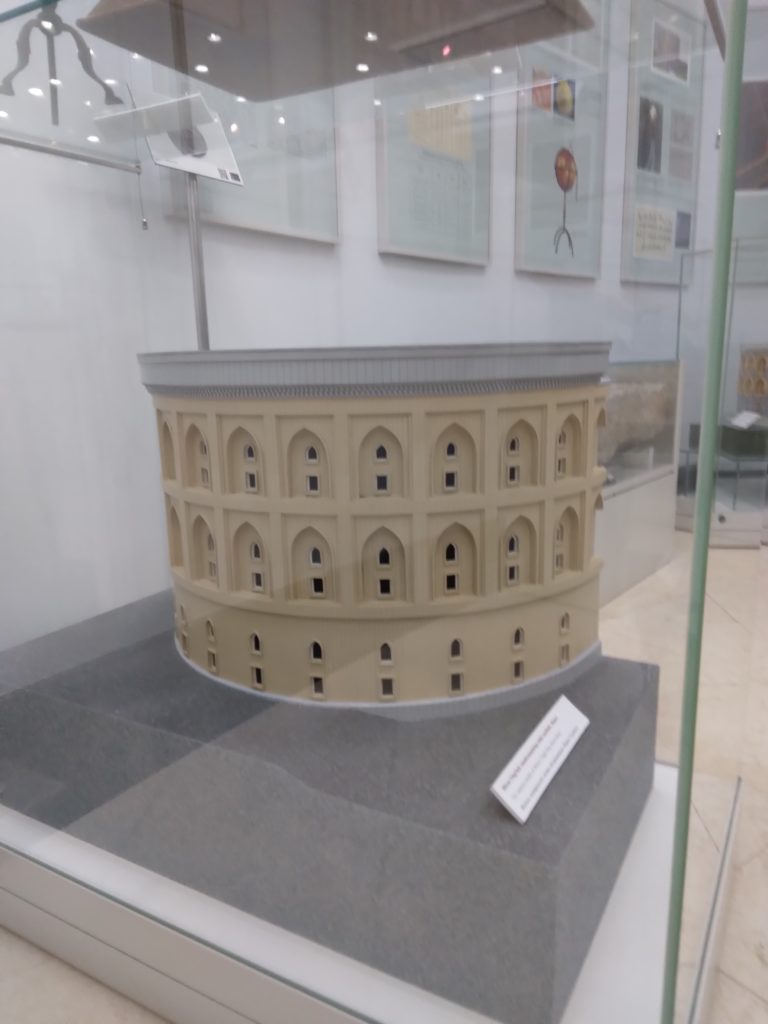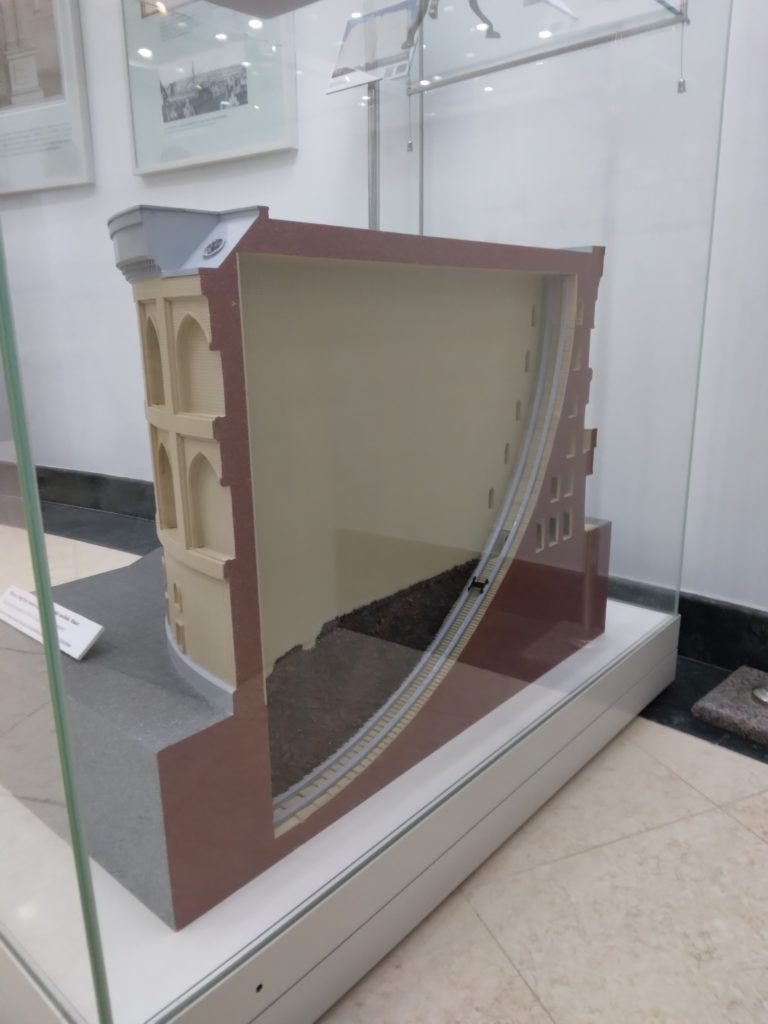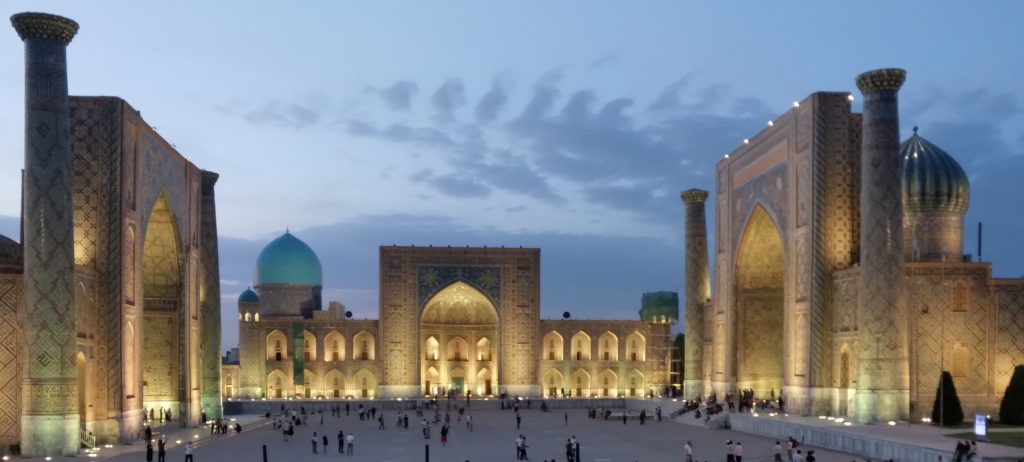I spent last week in Uzbekistan attending a conference and seeing some sights. I’ll talk about the conference tomorrow. What I want to do today is talk a little bit about higher education in Uzbekistan, which is a pretty fascinating story.
In terms of its “modern” higher education, the system is your basic post-Soviet story: not a lot of comprehensive universities, but an awful lot of specialized technical institutes, such as the Tashkent Institute of Irrigation and Agricultural Mechanization Engineers, which, despite its picayune-sounding name (to western ears, at least) is correctly considered one of the best universities in the country. This is a good thing too, given how the country conducts intensive agriculture on some pretty sub-standard soil. And universities there tend not to have a lot of research facilities because – as was true in pretty much all the Soviet Republics – most of the money for labs went to the Academy of Sciences, which sit outside the university system.
And, like many of the Central Asian republics, the system suffered from financial collapse in the 90s and authoritarian Presidents-for-life who were skeptical about the benefits of expanding higher education for fear of creating pools of educated-but-potentially-disaffected young people in the 00s. Uzbekistan never went full Turkmenistan (which reduced its intake of students by something like 90%), but let’s just say higher education was not a priority.
However, in the last decade or so, things have changed. The government has focused on expanding access to higher education, so much so that in the last ten years, tertiary enrolment has quadrupled (not a typo). Of course, what that has meant is a lot of new private universities, some of them local, some of them international (the most prestigious of which is probably Politecnico di Torino) and a serious lack of professors with terminal degrees. In other words, it’s the usual lower-middle income country higher education trap: Uzbekistan is rich enough to embark on expansion, but not rich enough to do it in a way which is likely to allow universities to drive technology-driven economic growth (which, to be fair, is a rare policy outcome outside China).
But present-day higher education isn’t the only reason to pay attention to Uzbekistan. It’s past higher education – literally six hundred years in the past – which is possibly more interesting. For Uzbekistan is one of the few countries in the world which has managed to build part of its national myth around science and universities.
Uzbekistan has done reasonably out of the Soviet bargain, which had allowed national identities in central Asia to grow alongside socialism, and also feared separatist and irridentist pressure given the large numbers of Tajiks in the south of the country (and to a lesser extent Kazakhs in the north; Kazakhstan had lobbied quite heavily in the 1920s for Tashkent to be part of their country on the grounds that the area around the city was majority-Kazakh). But having had independence thrust upon it by the collapse of the Soviet Union in the waning weeks of 1991, the Uzbeks threw themselves into the task of creating a national identity, incorporating certain national myths, with gusto.
Basically, what the Uzbeks want you to know about themselves is this:
1) Uzbeks are cultured. Literally you can’t go into any museum on any subject without seeing an exhibit of some guitar-like instruments (and there are a lot of different types!) jammed in there somewhere.
2) Uzbeks are fierce. This is why there are statues of Tamerlane everywhere. The fact that Tamerlane was not ethnically Uzbek (he was Turkish/Mongolian) is neither here nor there: he placed his capital in Samarkand and made the city the most glorious in the world, and that’s all you need for a good myth.
3) Uzbeks are scientists. This one relies on the story of Ulugh Beg, Tamerlane’s grandson and king of the Timurid Empire from 1447 to 1449. Ulugh Beg may have been a king but his first love was astronomy and what he is mostly remembered for is his construction (prior to his ascension to the throne) in Samarkand of a large observatory and an accompanying madrassa which, for a very brief period in the late the 1430s and 1440s probably hosted the greatest concentration of mathematicians and natural scientists anywhere in the world.


This is a lot of the Uzbek historical myth-making playbook. Every museum I visited somehow manages to jam in all three of those elements.
Now, the practical upshot of Ulugh Beg’s scientific exploits on Uzbek society, 600 years later, is small. For the most part, individual scientists would attract the patronage of this or that Emir and would often move about in an itinerant fashion without putting down roots. The result was that it was hard for any solid “cluster” of scientists could form which could pass on information from one generation to the next and no single place could long claim mastery over a particular domain of studies, the way Bologna did for law or Paris for philosophy. Along a modern metric, a place like Samarkand would (briefly, anyway) do very well on the Shanghai rankings, which simply measures scientific output/recognition and would do badly in the QS and THE rankings because it would not have the time to build a “brand” recognizable to the world at large.
And it was all pretty short-lived and evanescent. Ulugh Beg was pushed into taking the throne in 1447 and made such a hash of it that he was murdered by his son only two years after taking the throne (possibly the world’s earliest cautionary tale about academics taking political office). The observatory was sacked, and, not surprisingly, most of the scientists dispersed shortly thereafter. Only a small piece of it now remains, though boy is it cool to visit. Samarkand State University claims to be “descended” from Ulugh Beg’s madrassah, but that requires a serious act of imagination, to put it mildly.
In fact, its main legacy nowadays is the superb madrassa itself, which was 150 years later joined by two other equally superb madrassas on a common square which is now known as the Registan. By a country mile, the square created by these three institutions make up the greatest campus quad in the entire world, which on its own is a reason to travel to Uzbekistan.


But regardless of all that: Uzbekistan is great, and you should go there as soon as you possibly can (and read Erika Fatland’s Sovietstan and Adeeb Kalib’s Central Asia before you go). I’ll be doing the same.

 Tweet this post
Tweet this post
